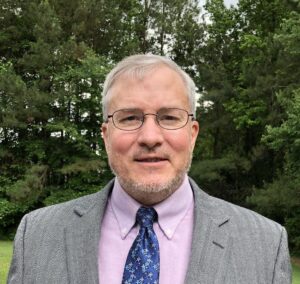Seminar of the MEAS department | Marine, Earth and Atmospheric Sciences
Speaker – Fred L. Ogden, Senior Scientist, NOAA-NWS Office of Water Prediction, Tuscaloosa, AL (hosted by R. Harmon).
Seminar Title – Modeling Framework for Next Generation Water Resources: Opportunities for Community Participation.
Please check your email for a zoom link.
Summary – Providing timely hydrological forecasts in inland and coastal areas requires modeling in a high performance computing environment. The current operational NOAA-NWS National Water Model uses a uniform formulation to create river forecasts on a continental scale in the NHD + drainage network. Scientific evaluations in the literature of the hydrological community show, however, that different model formulations for different hydrological regions are likely to improve predictability given the spatial variability of the dominant mechanisms for generating storm surges and the associated uncertainties in processes and parameters.
The multitude of legacy water resource models have different inputs and setup workflows, runtime environments, discretizations, solvers and required constraints. The variety of approaches makes comparing models and interoperability difficult. The WaterML 2.0 HY_FEATURES standard provides a stable metamodel for describing the hydrological landscape and comprises four basic topological elements – “catchment area”, “river path”, “water body” and their “nexus” connections, which represent internal constraints and provide natural stopping points between Component models. This data model standard helps to standardize the model setup workflows.
The Next Generation Water Resources Modeling Framework, currently under development by NOAA-NWS, promotes interoperability, comparison, model-based testing of research hypotheses, and ultimately improves agency-specific operational forecasting, while incorporating the rapid adoption of advances from the academic and federal research community. This is achieved by using the drainage network as a graph to organize the parallelization and by adding state serialization functionality and models with parallel formulations to the Basic Model Interface (BMI) of the Community Surface Dynamics Modeling System (CSDMS). Work in progress uses the open source development paradigm and participation from the research community is welcomed. The Next Generation National Water Model will represent a specific configuration of the modeling framework for next generation water resources. Its model-agnostic, open-source, standards-based design unifies model setup workflows, promotes model interoperability, and enables NOAA-NWS and other state water modeling partners to work with research and academic communities to stop developing and, in many cases, reinventing models while the modeling for the hydrological forecast is advanced more quickly.
Bio – Fred L. Ogden came to NOAA from academia. He held permanent positions in the civil engineering faculties at the University of Connecticut (1994-2005) and the University of Wyoming (2006-2017) with expertise in hydrology and hydraulic engineering. Together with students and employees, Dr. Ogden has developed several innovative hydrological simulation models, including the Gridded Surface / Subsurface Hydrologic Analysis Model (GSSHA) and ADHydro, an unstructured physics-based hydrological simulator for supercomputing applications. In addition, he has extensive field and laboratory experience in physical hydrology and hydraulics. Dr. Ogden led the team’s discovery of the Soil Moisture Velocity Equation, which replaces the computationally intensive 1-D Richardson / Richards’ partial differential equation with an accurate, reliable, and computationally efficient ordinary differential equation.



Comments are closed.